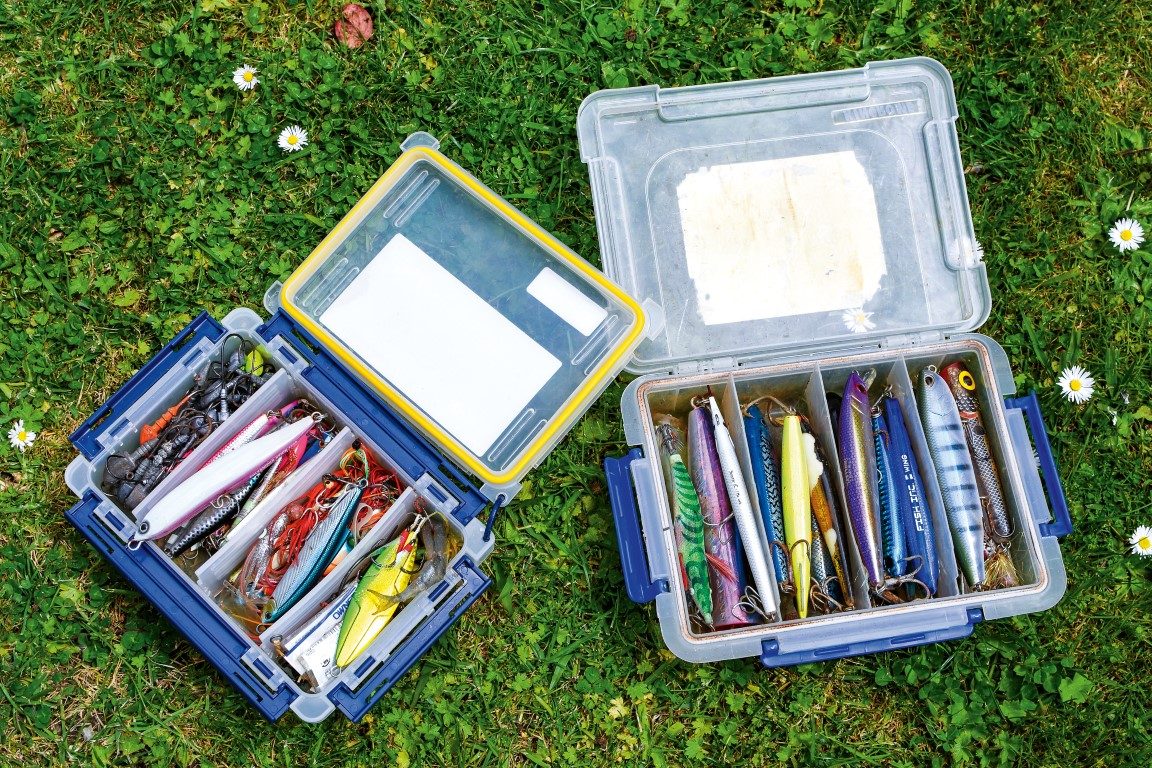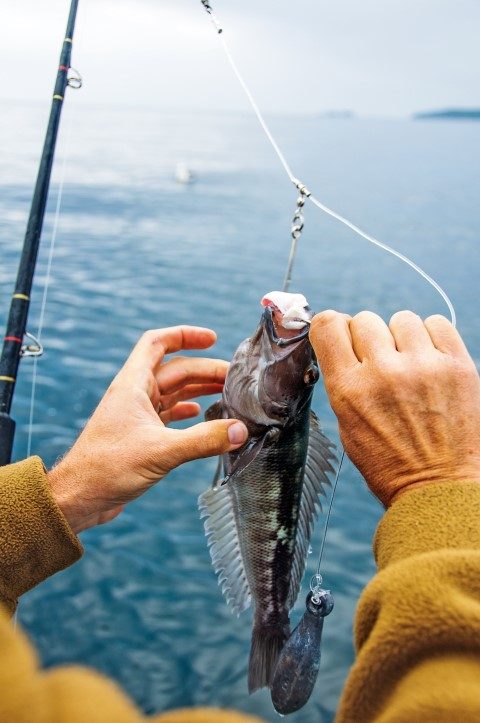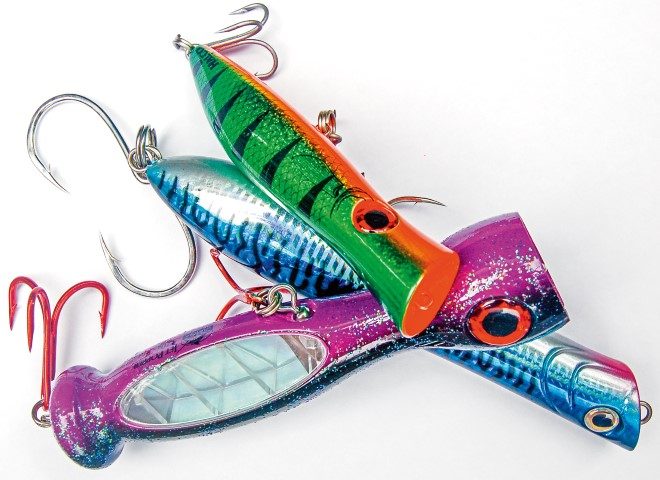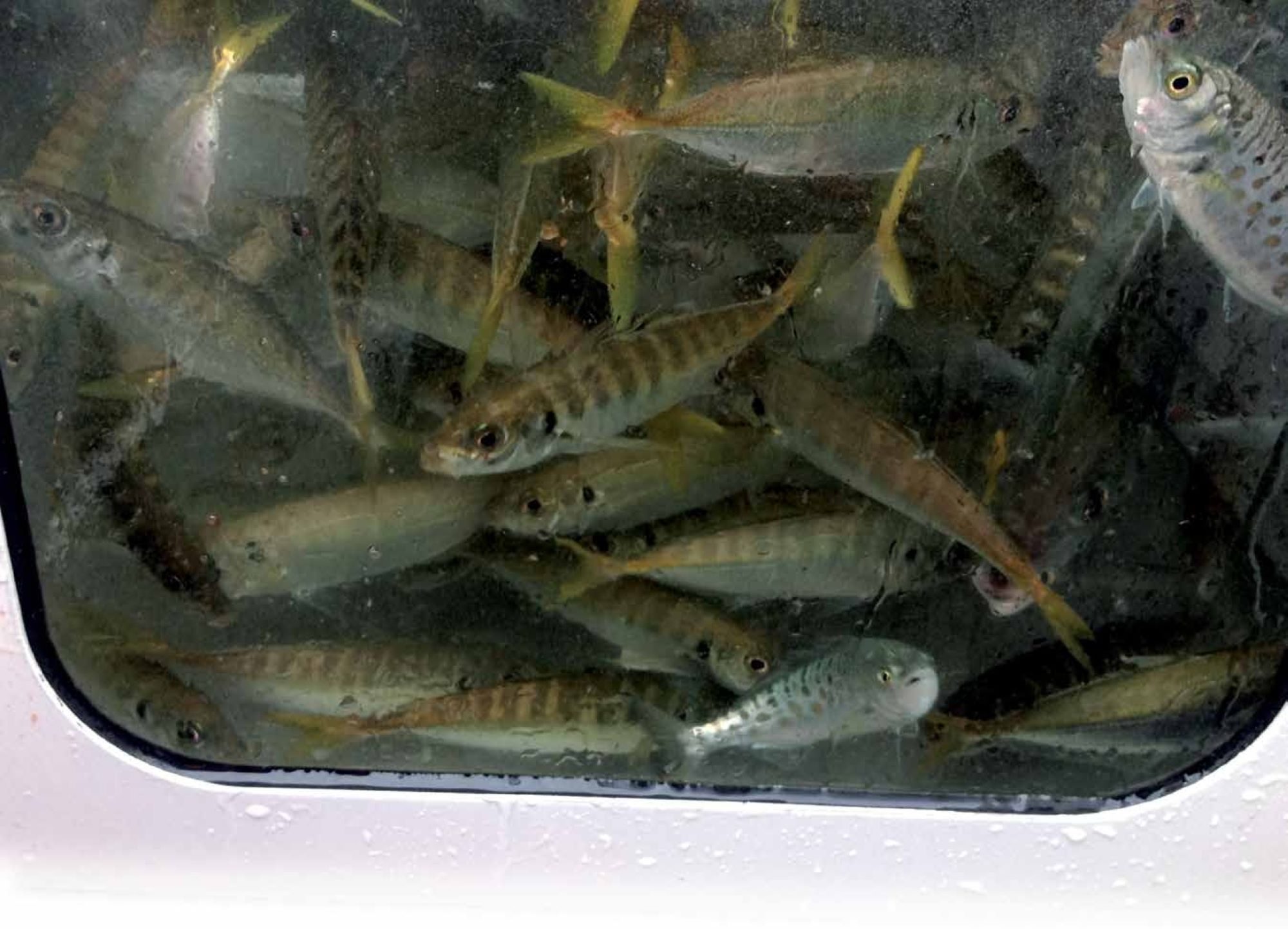

Perhaps the biggest mistake people make, other than buying cheap, poor quality fish hooks, is using inappropriately-sized examples.
Using a hook that is too large – for the bait or the fish you are trying to catch – makes a successful hook-up unlikely. Fish are either too wary of the bait to bite, or the hook won’t fit in their mouths.
Using hooks that are too small is another common mistake. Not only is it too easy to choke the gape of the hook with the bait, making it difficult to hook a fish, a too-small hook may fail when you do hook up.
BIG BAITS, BIG HOOKS
As a general guide, the size of the bait determines the size of the hook: big baits should be fished on large hooks, small baits on small hooks. There’s a fair bit of flexibility, depending on the species you are fishing for and the type of hook you use, but bait size is a good guide: selecting an appropriate hook size allows an angler to present a bait in a way that’s attractive to fish.

The species you are targeting also influences hook choice. For some species it’s best to use quite large hooks, perhaps because smaller, lighter hooks can bend or snap, or because smaller hooks could be swallowed, resulting in gut-hooked fish. Fishing for both snapper and blue cod, for instance, requires relatively large hooks to avoid undersized and deep-hooked fish.
Some big snapper specialists fish exclusively with 9/0 or 10/0 hooks. Snapper are aggressive feeders, so they’re not too put off by such large hooks – or the large baits they’re embedded in. Large hooks are necessary to ensure there’s enough hook point exposed to achieve a clean hook-up.
However, most baits fishers targeting snapper use smaller baits – pilchards, half-pilchards and cut baits of various types. For such baits, smaller hooks are better. For typically large, whole New Zealand pilchards, a couple of 7/0 hooks should do the trick, but if the pilchards are smaller, scale down to 6/0 hooks. For half-pilchards and cut baits, 5/0 hooks may be more appropriate.

With blue cod there’s seldom any need to use hooks smaller than 6/0, whereas if it’s tarakihi you’re after, small baits on 2/0 hooks or smaller may be more effective. For trevally, 4/0 or even 3/0 hooks will get more hook-ups than hooks in larger sizes, while 12/0 or 14/0 hooks are not too big for hapuku and bass.
Correct hook size selection is particularly critical when fishing live baits. Live bait hooks are relatively heavy gauge to stand up to strong fish and heavy tackle. Using a hook that’s too big for the live bait will not only make the bait less attractive to predatory fish, it will quickly exhaust and often kill the bait. On the other hand, a hook that’s too small may bury itself in the live bait or fail to hook up when you get a bite.
Mackerel-sized live baits are best fished on 5/0 or 6/0 live bait hooks, with larger hooks used for larger baits and smaller hooks for smaller baits. Piper live baits are especially fragile, so small, light hooks are best. For bigger baits, including large koheru, kahawai and small tunas, 9/0 hooks and bigger may be appropriate.
LURES TOO
It’s not just bait fishers who should pay attention to hook size selection. So should lure fishers.
Recently there’s been a move by marlin fishers towards using lighter-gauge hooks. These are fished on much lighter leaders, which in combination with lighter hooks allow the lures a more vigorous action. With superior penetration, their hook-up ratio is also better. The downside is the possibility of hook or leader failure, especially at the boat, but by using wind-on leaders and playing fish off the rod rather than grabbing the trace at the boat, successful captures are possible.

Many lures are sold with treble hooks, but for New Zealand conditions the hooks they’re supplied with may be inadequate given the fishing tackle we use and the hard-pulling marine fish we target. It may be necessary to replace standard hooks (and split rings) with stronger, heavy-duty models, but don’t get too carried away or you’ll destroy the lure’s action, along with its ability to catch fish.
Try and match the new trebles to the old ones in terms of size but upgrade the strength. Be aware that stronger hooks are often heavier in gauge so they weigh more, which can affect the lure’s action, buoyancy and sink rate. Ideally, any replacement hooks (and rings) should weigh about the same as the originals.
Replacing trebles with strong single hooks is another option, but it too can affect a lure’s action and balance.
Soft plastics fishers also have choices to make, not just around lure size and jig head weight, but also hook size, shank length and hook wire gauge.
Wire gauge is particularly important for those snapper fishers who, like me, fish light jig heads in shallow water. Once jig head weights drop below half an ounce (14.2g), the hooks tend to become finer in gauge and smaller in size.

Small, fine wire hooks, while they penetrate well and are useful for light tackle fishing, easily bend or break on even modest-sized snapper. Finding jig heads of less than 7.1g with suitably large, decently strong hooks can be very difficult, since they are manufactured to catch smaller, much less powerful species than our snapper.
There are lightweight jig heads available with strong hooks, but once you get down to small jig heads, they tend to be moulded on fine wire hooks. To use them, you’ll need to dial your drag setting back and play fish gently to avoid losing fish to bent hooks.

Shank length should be considered as well. Jig heads of the same weight may be available in long or short-shank versions and in different hook sizes. I prefer short-shank hooks for most of my soft bait fishing because I believe the soft plastic has more freedom to move, which makes the lure more attractive. However, long-shank jig heads hook-up more consistently when using larger soft baits.
With smaller soft plastics, my preference is to use small hooks, provided they are strong enough. Although I once routinely used jig heads with short-shanked 5/0 hooks, mainly because they were strong enough, there are now plenty of short-shank 3/0 jig heads with suitably strong hooks. In my opinion these work better with 5-inch (13cm) soft baits that 5/0s. For 4-inch (10cm) baits, 2/0 or even 1/0 is better than 3/0 and so on downwards, but as noted, finding small hooks that are also strong is difficult.
5/0 hooks or even bigger sizes are appropriate for larger soft baits. But just as when fishing natural baits, with soft plastics you don’t want hooks that are so large they stifle a bait’s action or so small they don’t sufficiently cover the bait, resulting in missed hook-ups.




